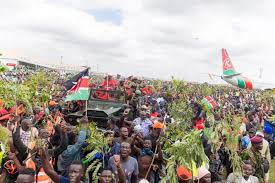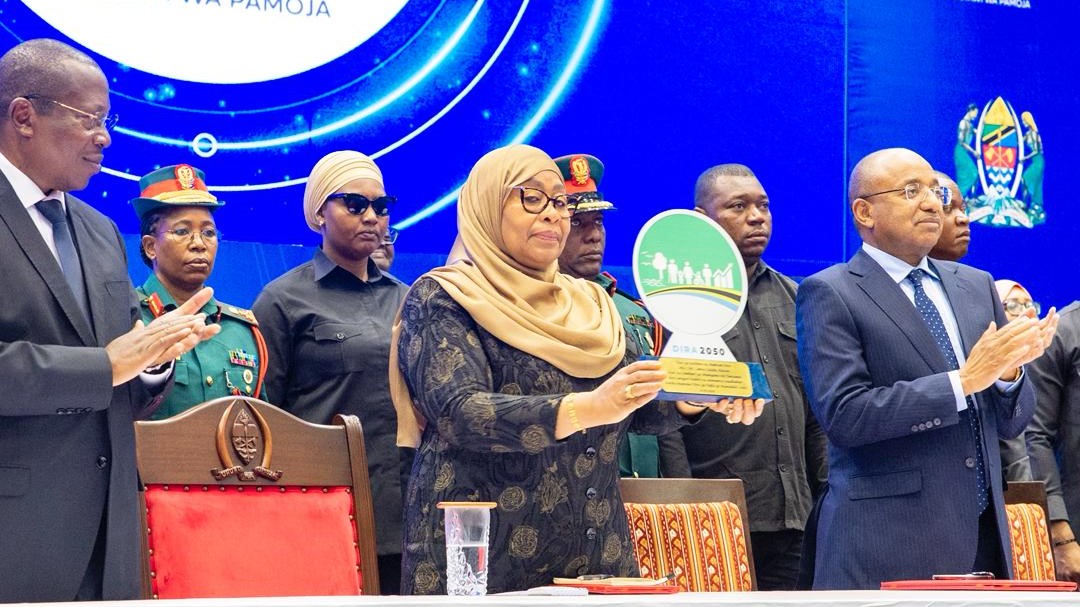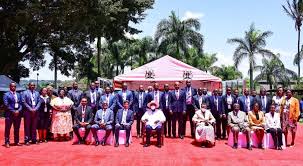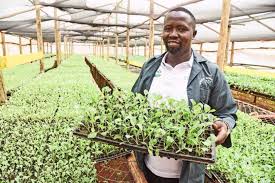When news broke that former Prime Minister Raila Odinga had died in India on Wednesday, October 15, 2025, the Luo community erupted into deep, emotional mourning.
To them, Raila was not just a politician — he was a symbol of hope, a father figure, and a pillar of their identity.
By Thursday morning, thousands had gathered at the Jomo Kenyatta International Airport (JKIA) in Nairobi to receive his body, which arrived from India with full military honors.
The air was filled with cries, chants, and traditional songs as mourners waved twigs, beat drums, and shouted his popular nicknames — Agwambo, Baba, Jakom, and Tinga.
Across Siaya, Kisumu, Homa Bay, and Migori, normal life came to a standstill. People poured into the streets, villages, and marketplaces, weeping loudly, hugging one another, and rolling on the ground in grief.
For the Luo, mourning is not quiet or restrained — it is emotional, open, and dramatic. It is their way of expressing both pain and pride.
“He was our father and our guide. The pain is too deep to hide,” said one mourner outside Raila’s rural home in Kang’o ka Jaramogi, Bondo.
At the homestead, scenes of traditional mourning unfolded in full color. Mourners dressed in bright costumes and carried decorated bulls, motorbikes, and traditional ornaments. Others sang, danced, and beat pots in rhythm with the chants.
One of the most striking rituals performed was “Tero Buru”, which means “Sending Away the Dust.” This ancient Luo ceremony involves driving bulls around the homestead while chanting and raising clouds of dust to ward off evil spirits believed to cause death.
During the ritual, men dressed in sisal skirts and animal skins, their bodies covered in ash. Loud drums, whistles, and horns filled the air as the eldest son symbolically wore his late father’s headgear and carried his spear — taking on his role as the new family head.
To outsiders, this might seem chaotic. But to the Luo, it is sacred. Mourning is both an emotional release and a celebration of a life lived.
“Luos cry loudly and for long because grief must be shared,” said Kamau Mbothu on social media. “It helps the living heal. It’s not just noise — it’s therapy.”
Another user on X (formerly Twitter) added: “Cultural tolerance is important. The Luo have every right to mourn their leader in their own way — with sound, color, and emotion.”
Even as debates arose online about whether the community’s mourning was too dramatic, many defended the tradition as an expression of love and unity.
For decades, Raila Odinga stood as the face of Kenya’s democratic struggles — a man who fought for freedom, equality, and justice. His people are determined to honor him in the only way they know how: loudly, proudly, and unapologetically.
As his family prepares for his state funeral and private burial, the wails and songs of the Luo will continue to echo across the nation — a reminder that grief, too, can be beautiful when it is shared in the open.



